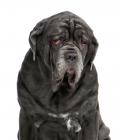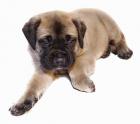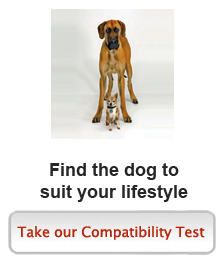Mastiff
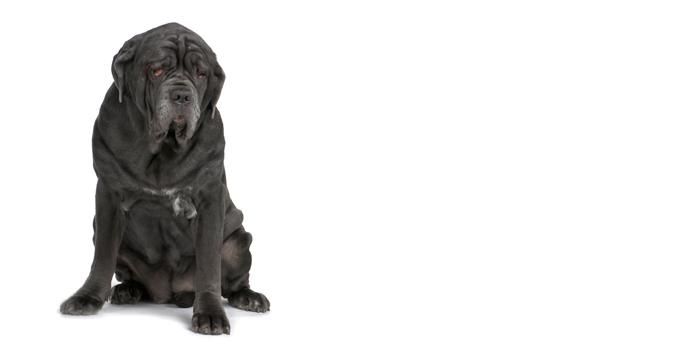
In my own words
I may look kind intimidating but I’m nice as pie when you get to know me! I love my family, I’ll do anything for them. I’d make a great guard or watchdog you know. Feel my muscles! Strong aren’t I? I’m gentle though. People call me a “gentle giant”. Some of my kind can get pretty big, in fact the Guinness World Record for the largest dog is held by a Mastiff! He was the size of a small donkey, can you believe that? Wow!
Did you know my kind used to be used in dog fighting and bear baiting? Can you believe that? Look at us now! We’re far too nice to do that sort of stuff these days. Plus it is probably a bit too much effort really when you think about it. Speaking of which, I’m getting pretty tired so I think I’m just going to lay here for a while...
My ideal owner(s)
Singles
Families with older children
Outdoorsy types
What they say about me
Loyal and devoted
Laid back
Protective
Please read on, to find out more about me, and whether I will be someone you can be happy with for the next 10 years, or even longer!
Is this Mastiff for you?
Test your knowledge about the Mastiff
Information essential about the Mastiff
Kennel Club Group:
Working
Size:
Large: Weight Male 185 – 230 lb (84 – 100 kg) Female 120 – 185 lb (54 – 84 kg)
Height Male 30” (75 cm) minimum Female 27.5” (69 cm) minimum
Popularity:
The Old English Mastiff suffered a drop in popularity during the mid-1940s but enthusiasts from American have helped re-establish the breed around the world and it has since increased in popularity
Breed History:
According to some accounts, Mastiffs were brought to England by Roman invaders thousands of years ago. Another theory is that Phoenician traders introduced them to Britain at around the same time. This ancient breed perhaps descended from the ancient Alaunt through the Pugnaces Britanniae (the original Roman name for the Mastiff). The breed was primarily used as a guard dog. The Mastiff was favoured by nobility as a hunting companion and revered by peasants as a family and livestock protector. They were also used as arena gladiators, participating in bull, bear and dog combat but this breed is now noted for its gentle temperament. The lineage of the modern dogs can be traced back to the early 19th century when organised breeding of the Mastiff started.
The greatest weight ever recorded for a dog was a 343 lb (156 kg) English Mastiff from England named Aicama Zorba of La Susa. According to the Guinness Book of Records, at 7 years old Zorba stood at 35” (89 cm) at the shoulder and was 8.25 feet (251 cm) from nose to tail, about the size of a small donkey.
This breed has a long history of being used in blood sports such as bear baiting, bull baiting, lion baiting and dog fighting. In 1835 the Parliament of the United Kingdom implemented the Cruelty to Animals Act 1835, prohibiting the baiting of animals which led to the decline of the Mastiff being used for this purpose. Mastiffs continued to be used as guards for country estates and town businesses. The breed was almost extinct after World War I until a dog called Beowulf bred in Canada from British imports Priam of Wingfied and Parkgate Duchess was registered by the AKC in 1918, starting the slow re-establishment of this breed. The breed has gradually been restored and is now found worldwide.
Character:
Massive and sometimes lumbering, these dogs have a gentle, loving an dignified personality that makes them the quintessential “gentle giant”. Mastiffs are responsive and obedience with an intelligence so serene that they come across as extremely mellow. The Mastiff is watchful, reliable and intelligent. They are extremely loyal and devoted to their family, thriving on human companionship and affection. This breed does not do well if left alone for extended periods of time. The Mastiff does well in a home with older considerate children but is not good with other household pets unless they have been raised with them. This breed is naturally protective and possessive of its family and home. This breed is not recommended for the novice, inexperienced or passive owner.
Temperament:
The Mastiff has an imposing and dominant demeanour but are often referred to as a “gentle giant” due to their dignified yet mellow personality. They are fearless, alert and extremely courageous making them good estate guard dogs. The Mastiff is calm and affectionate to its master but is equally capable of protecting their owner. Any perceived threats will mean the Mastiff takes immediate defensive action, placing itself between its master and the perceived threat and using a warning growl. Some Mastiffs on the other hand will high behind their master before using their warning growl. The Mastiff will rarely attack a perceived threat unless severely provoked and instead will generally pin the individual until a human they know arrives and reassures them. Overall, Mastiffs are good natured, calm, easygoing and surprisingly gentle for their large size.
Conformation:
The Mastiff is a giant, symmetrically shaped dog with a powerful frame. While the Irish Wolfhound and Great Dane are taller, they are not as robust as the Mastiff. This breed has a large, square head with broad, wrinkly foreheads and short, black muzzles. The eyes are small and brown with a watchful and warm expression and the ears hang close to the cheek. They have thick, strong necks, deep chests and level backs with a tapered, high set tail that hangs low. The Mastiff carries itself with dignity and grandeur
This breed has a double coat. The outer coat is short, coarse and straight while the undercoat is dense and fits close to the body. Pied Mastiffs are rare and other non-standard colours include black, blue brindle and chocolate mask.
Colour:
The coat colour comes in apricot, fawn, silver or brindle with a black nose, muzzle and ears.
Training:
Early socialisation and obedience training is extremely important for this breed as the Mastiff requires a dominant handler. They do not respond well to harsh or heavy-handed methods. While eager to please, they can be difficult to train. This breed responds well to training that is firm and consistent and require a trainer who is respectful, fair and patient. The Mastiff is a sensitive breed and makes a well-mannered household pet. This breed excels in guarding, military and police work, weight pulled and search and rescue.
Care:
This breed has a tendency to drool and snore. The coat requires minimal grooming, occasional brushing with a firm bristle brush is sufficient. Bathing or dry shampooing should only be done when necessary. This breed is an average shedder
Health:
The lifespan of a healthy individual is around 10 years, however, some live for as long as 11 years. If you buy from a reputable, responsible breeder, health problems should not occur. The Mastiff is prone to hip and elbow dysplasia, heart disease and eye problems. They are prone to bloat so it is recommended to feel them several smaller meals rather than one large meal a day. The Mastiff is a large dog that needs the correct diet and exercise to stay healthy. Excessive running is not recommended in the first two years of the dog’s life but regular exercise must be maintained to prevent lazy behaviour and health problems. A soft surface is needed for sleeping to prevent the development of calluses, arthritis and hygroma (an acute inflammatory swelling). Due to the large size of this breed, puppies can potentially be smothered or crushed by the mother during nursing and a whelping box along with careful monitoring can prevent such accidents. The Mastiff can also suffer gastric torsion, entropion, progressive retinal atrophy (PRA) and persistent pupillary membranes (PPM). When buying a Mastiff it is recommended that the dog be tested for hip and elbow dyplasia, thyroid and DNA for PRA.
Exercise:
The Mastiff is slow moving and has a tendency to be lazy. Daily walks on a lead or play sessions in a safely fenced yard are recommended to keep them happy and active. They do okay in an apartment provided they are given sufficient exercise and attention.
You may also like:
Mastiffs looking for a home in UK »


If you like Mastiffs, you may be interested in breeds of the same size »
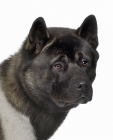

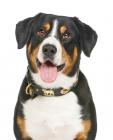
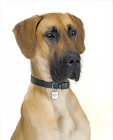

If you like Mastiffs, you may like other breeds with similar characteristics »

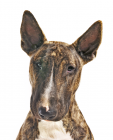
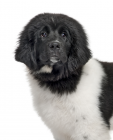

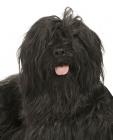
If you like Mastiffs, you may be interested in these other working dogs »
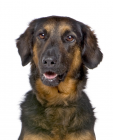

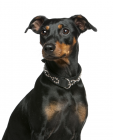

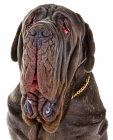
Advice on choosing your breed »
Find an animal shelter or rescue home where a Mastiff is waiting for a new home »
The following grid gives a fast track review which covers all breeds. You can apply it to help you decide if a Mastiff is suitable for you, the environment where you live, your personality and your lifestyle. On the grid, 1= strongly disagree, and 5= strongly agree. For example, if you are looking for a good watchdog, look down the list under Role and Suitability, and you will see that Mastiffs love make excellent guard and watchdogs, scoring 5. You might like to save or print off this section and keep it for reference while you check some other breeds before making your final choice
Be the first to rate this breed »
|
*PLEASE NOTE: All our breed profiles are general, and all dogs are individuals. Always talk to the breeders and meet the owners you are buying from. Try to meet the dog and its parents if it is a puppy in their home environment.








